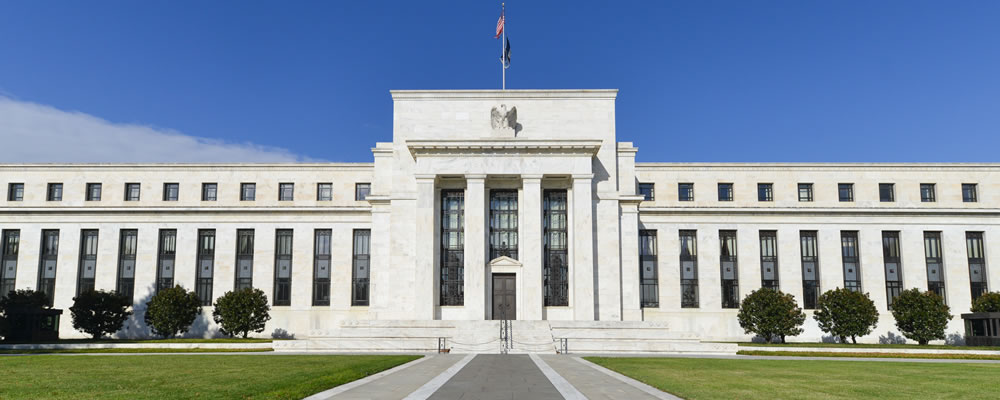Expectations for Federal Reserve Hawkishness Keeps Euro to US Dollar Exchange Rate Falling
A brief jump at the beginning of the week was short-lived, and the Euro to US Dollar (EUR/USD) exchange rate has been tumbling on underwhelming Eurozone data and the Federal Reserve’s latest hawkish signals since Tuesday.
Since opening this week at the level of 1.1655, EUR/USD briefly climbed to a three-week-high of 1.1745 but has since slumped. At the time of writing on Friday, EUR/USD was trending near a one-month-low of 1.1579.
The latest Eurozone and US data hasn’t been hugely shocking, nor has it particularly changed the Euro (EUR) or US Dollar (USD) outlooks, but it has done little to change the exchange rate’s downward trajectory.
The biggest news of the week for Euro to US Dollar exchange rate investors was the Federal Reserve’s policy decision on Wednesday, which continued to indicate that US interest rates would continue to rise while Eurozone rates are expected to remain low.
Euro (EUR) Exchange Rates Remain Unappealing on Signs of Slowing PMI Performance
Signs that Eurozone inflation might be seeing stronger price pressures than previously expected have not been enough to keep the Euro appealing, as the week’s other Eurozone data has been underwhelming in many aspects.
On Friday, the Eurozone’s overall July composite PMI slowed from 54.9 to 54.3 as expected, but many other figures including Eurozone services and Germany’s PMIs fell short of predictions.
The data indicated that Germany’s economy may have been performing slower than expected due to global trade concerns having an impact on German business activity.
According to Rob Dobson, Director at IHS Markit, there were uncertainties in the Eurozone outlook for both new orders and business optimism:
‘Both are reflecting the uncertainty about global market conditions, especially given the ongoing rhetoric about trade wars and the potential spillover effects to the broader economy and to manufacturing in particular.’
Overall, the cloudier Eurozone outlook is giving investors little reason to believe the cautious European Central Bank (ECB) will take a more hawkish stance any time soon. This has worsened perceived Central Bank policy divergence.
US Dollar (USD) Continues to Benefit from Policy Divergence Signals
This week’s US data has been solid enough to have no real impact on the US Dollar outlook, and much of the currency’s recent strength has been due to Central Bank speculation and market demand for safe haven currencies.
Wednesday saw the Federal Reserve hold its August monetary policy decision, in which the bank left policy frozen and hinted at a US interest rate hike for September as investors expected.
Most notably though, the bank maintained a hawkish outlook for its US interest rate hike path and indicated that rates would continue to rise at a relatively regular pace.
This significantly lightened market fears that criticism of the bank’s rate hikes from US President Donald Trump had influenced the bank outlook in some way.
With the Federal Reserve one of the only major Central Banks seeing through a rate hike cycle, monetary policy divergence is leaving the US Dollar appealing.
Fresh concerns about trade tensions between the US and China have been making the safe haven US Dollar more appealing too, with investors expecting the solid US economy to weather the worst of a potential trade war.
Euro to US Dollar (EUR/USD) Forecast: US Non-Farm Payroll Ahead, US Inflation Next Week
Unless upcoming US data is surprisingly poor, the Euro to US Dollar (EUR/USD) exchange rate could remain weak in the coming sessions and may even trend nearer its worst levels in months.
Before markets close for the week, the US Dollar could still be influenced by July’s US Non-Farm Payroll results.
This key data could weaken the US Dollar outlook if the NFP change figure comes in well lower than expected, or if US wages are particularly disappointing.
There is not much key Eurozone data due for publication over the next week, but Tuesday’s German trade balance results could prove influential if they give markets a better idea of how Germany is being impacted by US protectionism concerns.
Next week’s biggest news for Euro to US Dollar (EUR/USD) exchange rate investors will be Friday’s anticipated US inflation rate results from July, which could actually impact the Federal Reserve outlook if it is highly shocking.



